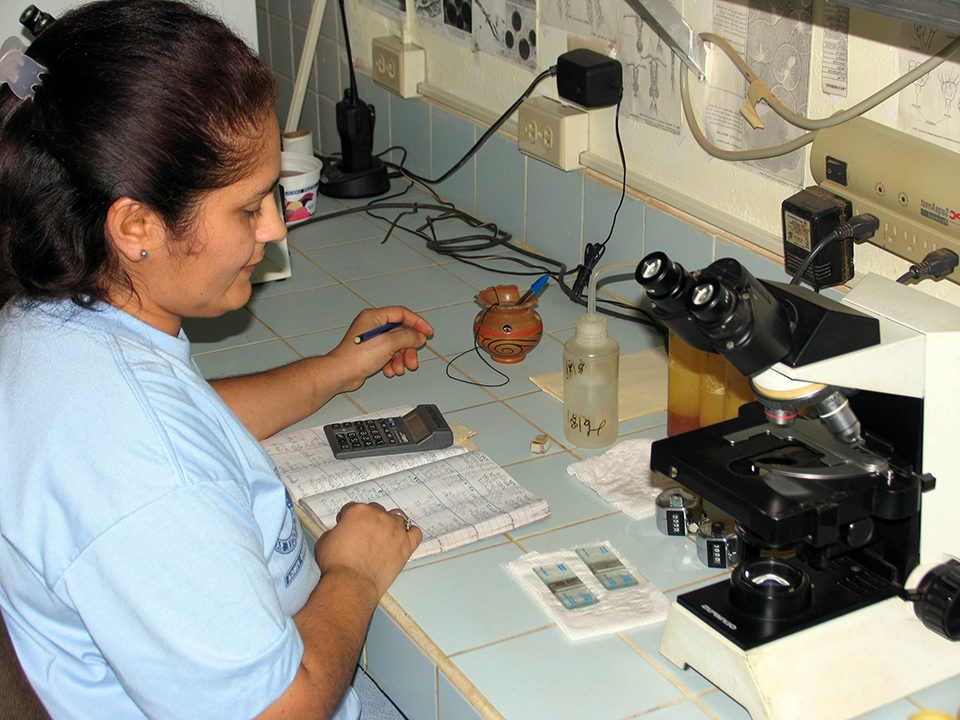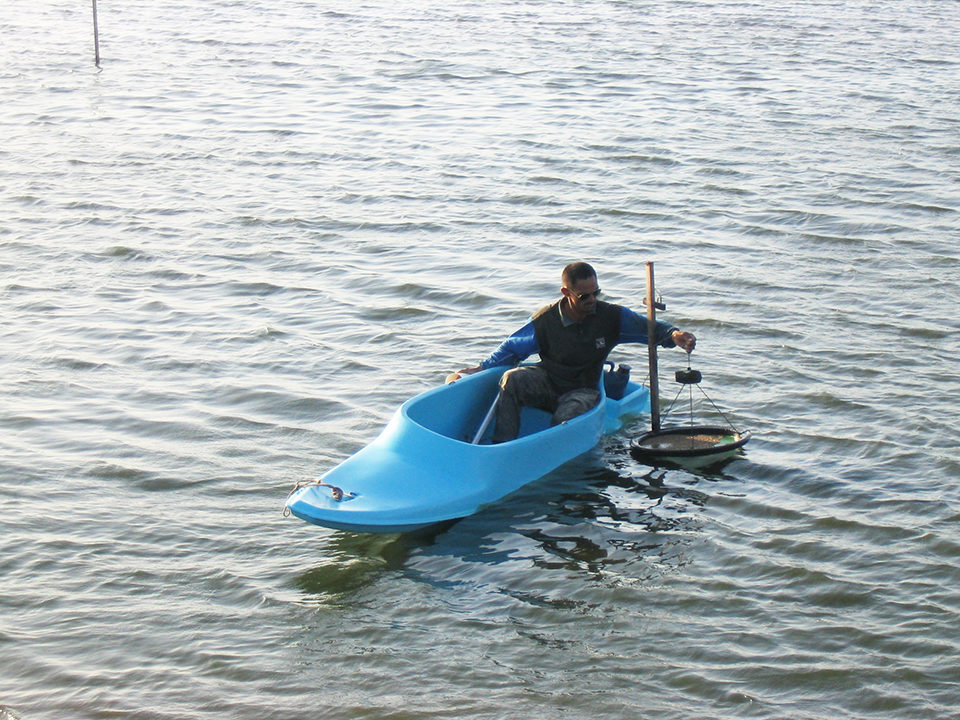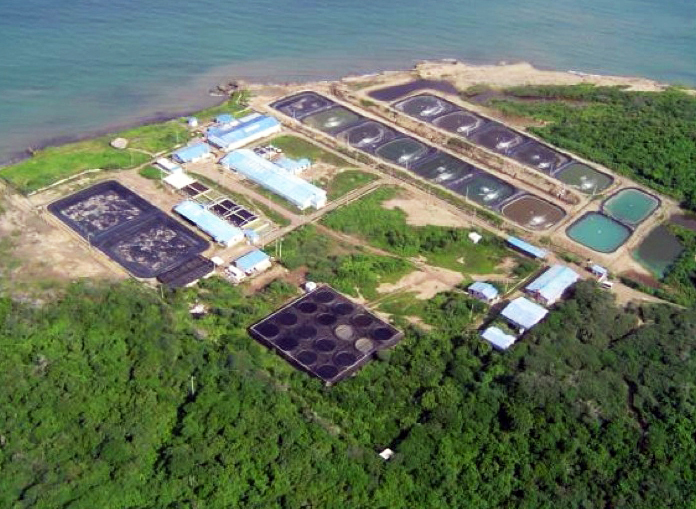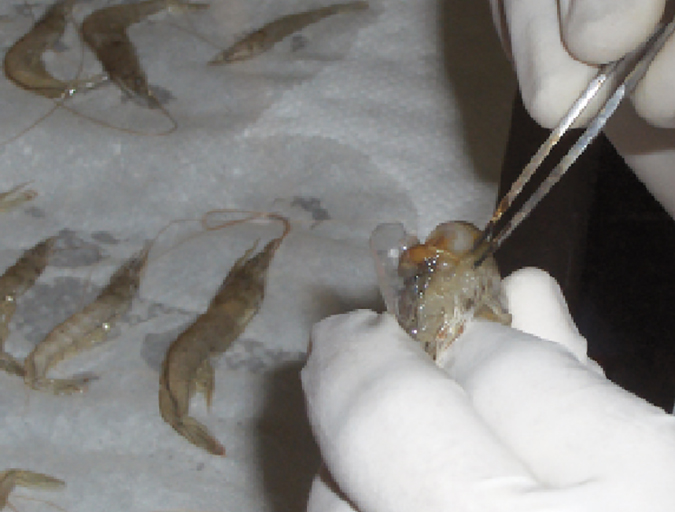A seven-step program

In the last year, white spot syndrome virus (WSSV) once again reared its ugly head. This scientifically fascinating virus is one of the largest ever discovered and has been the subject of dozens, if not hundreds, of publications in peer-reviewed journals.
More than a dozen groups have cloned structural components of the capsid (the outer protein coat) of the virus into bacterial and other vectors, and shown short-term impacts on the disease vector under controlled conditions. As this work continues to be investigated under real-world conditions, commonsense steps taken now can lessen the potential impacts of white spot syndrome virus on shrimp-farming operations.
Postlarvae selection
First, be selective if you buy postlarvae (P.L.) and smart if you sell them. Polymerase chain reaction (PCR) testing is not sufficient in the absence of a certified (not just claimed) specific pathogen-free (SPF) system to ensure the virus is not in broodstock. WSSV can become dormant in animals and be undetectable by PCR. Claims of SPF stock must be supported by history and verifiable audits.
Start with SPF animals, if possible. If not, ask that the hatchery test broodstock held at lower water temperatures. If the broodstock are ever in a non-controlled environment during their life cycle, they are not SPF. Controlled means bio-secure and closed.
Screening P.L.s is pretty much a useless exercise. Positives mean something, and negatives can only be taken as the tests failed to detect the presence of viral DNA. Screening pooled animals is helpful, but in the absence of a bio-secure and closed system, it is of dubious value.
In short, never buy PCR-positive animals. Never buy animals from a hatchery without SPF credentials. If hatchery owners will not let you determine this for yourself, do not buy animals from them.
Pond preparation
The second step lies in pond preparation. WSSV is endemic in most shrimp-farming countries and is spreading, partially as a result of failure to follow a few simple rules. The many carriers of the virus can be limited, but not eliminated.
Fill the pond and treat the water with at least 25 ppm of chlorine. This does not mean 25 ppm of a 65 percent powder. The chlorine level should be high enough to kill any free-floating virus, which should not be an issue unless your water source is full of animals dying from WSSV, and most of the microvectors such as crab larvae that carry the virus. Dirt ponds may require higher levels or even repeat applications.
Other treatment options include a variety of disinfectants, although bear in mind that these have organic demands. Vendors’ recommendations are often based on lab observations of effectiveness and efforts to keep the cost of the products low enough to remain attractive – even if they do not work well at the recommended dosages.
Make sure you inactivate all of the chlorine before stocking ponds. Do not use illegal chemicals or pesticides. Aerate and be patient in letting all the chlorine evaporate.
Water preparation
Filter all of the water that enters ponds at all times. Never ignore this rule, and never allow employees to bypass it for any reason. A single lightly infected wild shrimp is enough to set off an outbreak, and any number of vectors can get into your ponds in even a few seconds of failed vigilance.
Prepare animals for stocking
Stock the ponds carefully. Avoid excessive stress and use a system that lets you determine how the shrimp fare after stocking. Even 50 postlarvae in survival cages can be a useful indicator of stressful procedures. Acclimation and transportation are windows of opportunity for last-minute tuning. Be sure to use 25 to 50 ppm of ascorbic acid in the acclimation system.

Control everything you can
Monitor the ponds on a daily basis. This is typically done by the feeders. Smart farm managers make sure the feeders report animal behavioral and environmental variation issues, not just sick shrimp. The presence of crabs and other vectors in the water should be monitored on a weekly basis, and random sampling of shrimp is needed. In the earliest stages of infection, shrimp can carry WSSV with no evidence of being infected.
Screen shrimp populations with two goals. One is to find weak and dying animals, and determine what is affecting them. Most farms know very little about what kills their shrimp. Costly and time-consuming PCR tests are so sensitive that the load of virus present for the test to be positive is of little use in predicting a disease outbreak. This can result in poor choices about when to harvest. Harvesting too soon or waiting too long can result in higher losses than needed.
Fortunately, a simple, sensitive, inexpensive and very rapid commercial test strip can be used for quick confirmation of the presence of the virus. The enzyme-linked immunosorbent assay-based technology, the same used in pregnancy test strips, can be your “fire alarm.” When you start to see ELISA-positive animals, it typically means there is a virus load in the environment sufficient for your shrimp to begin dying soon, if they have not already been doing so.
Bear in mind that as the level of virus increases in the population, the rate of transmission increases among shrimp. As the virus kills them, they shed high numbers of virus into the environment and become increasingly susceptible to bacterial infections. While the virus can certainly kill shrimp in the absence of other pathogens, weakened shrimp are more readily infected with vibrios and other opportunistic bacteria. Lowering bacterial and viral loads is highly desirable.
Closed systems
Open systems are passé and not worth the risk. Close the ponds.
The secret to closing ponds is actually not what one would think. Aerate ponds with at least 5 hp/500 kg shrimp at harvest. If you expect 3 metric tons at harvest, use six 5-hp paddlewheel aerators to ensure that oxygen is never a limiting factor in your operation and that the stress from low dissolved-oxygen levels does not contribute to disease susceptibility.
You must, however, allow the biota in ponds to evolve to the constant input of feed, feces, molts, detritus and other organic matter. This requires monitoring and can be enhanced through the use of effective bioremediation tools.
Be open
Education is critical. Be open to learning and trying things that make scientific sense. Here are some things you may not know about WSSV:
• As with many other viruses, multiple substrains are present during an outbreak in a pond.
• These strains may differ in their ability to produce disease and are one important reason to lessen the viral loads in your ponds and the immediate environment.
• Even if you are successful in controlling the entrance of the virus to your farm, what your neighbors do can significantly impact your operations.
• There are no magic bullets that stop WSSV, but many practices can help lower the load of the virus in animals and the environment.
Perspectives
WSSV is here to stay. It is evolving and will worsen problems in some areas. Do the things you can to limit the impacts of the virus. Do not rely on slick sales and marketing packages that offer complete cures and absolute prevention. Such tools simply do not exist for shrimp viruses.
(Editor’s Note: This article was originally published in the March/April 2012 print edition of the Global Aquaculture Advocate.)
Now that you've reached the end of the article ...
… please consider supporting GSA’s mission to advance responsible seafood practices through education, advocacy and third-party assurances. The Advocate aims to document the evolution of responsible seafood practices and share the expansive knowledge of our vast network of contributors.
By becoming a Global Seafood Alliance member, you’re ensuring that all of the pre-competitive work we do through member benefits, resources and events can continue. Individual membership costs just $50 a year.
Not a GSA member? Join us.
Author
-
Stephen G. Newman, Ph.D.
President and CEO
AquaInTech Inc.
16715 52nd Avenue W, Suite E
Lynnwood, Washington 98037 USA
Tagged With
Related Posts

Health & Welfare
CENIACUA develops WSSV-resistant shrimp in Colombia
To combat white spot syndrome virus (WSSV) in white shrimp, Corporación Centro de Investigación de la Acuacultura de Colombia (CENIACUA) initiated a selective-breeding program to develop resistance in shrimp.

Health & Welfare
Double-stranded RNA against WSSV genes provides antiviral protection in shrimp
Silencing genes in white spot syndrome virus (WSSV) with critical roles in replication could provide a strong antiviral effect and thus reduce shrimp mortality. The authors therefore established a study to evaluate the antiviral efficacy of double-stranded (ds)RNA against non-structural WSSV genes.

Health & Welfare
A comprehensive look at the Proficiency Test for farmed shrimp
The University of Arizona Aquaculture Pathology Laboratory has carried out the Proficiency Test (PT) since 2005, with 300-plus diagnostic laboratories participating while improving their capabilities in the diagnosis of several shrimp pathogens.

Responsibility
A look at various intensive shrimp farming systems in Asia
The impact of diseases led some Asian shrimp farming countries to develop biofloc and recirculation aquaculture system (RAS) production technologies. Treating incoming water for culture operations and wastewater treatment are biosecurity measures for disease prevention and control.



